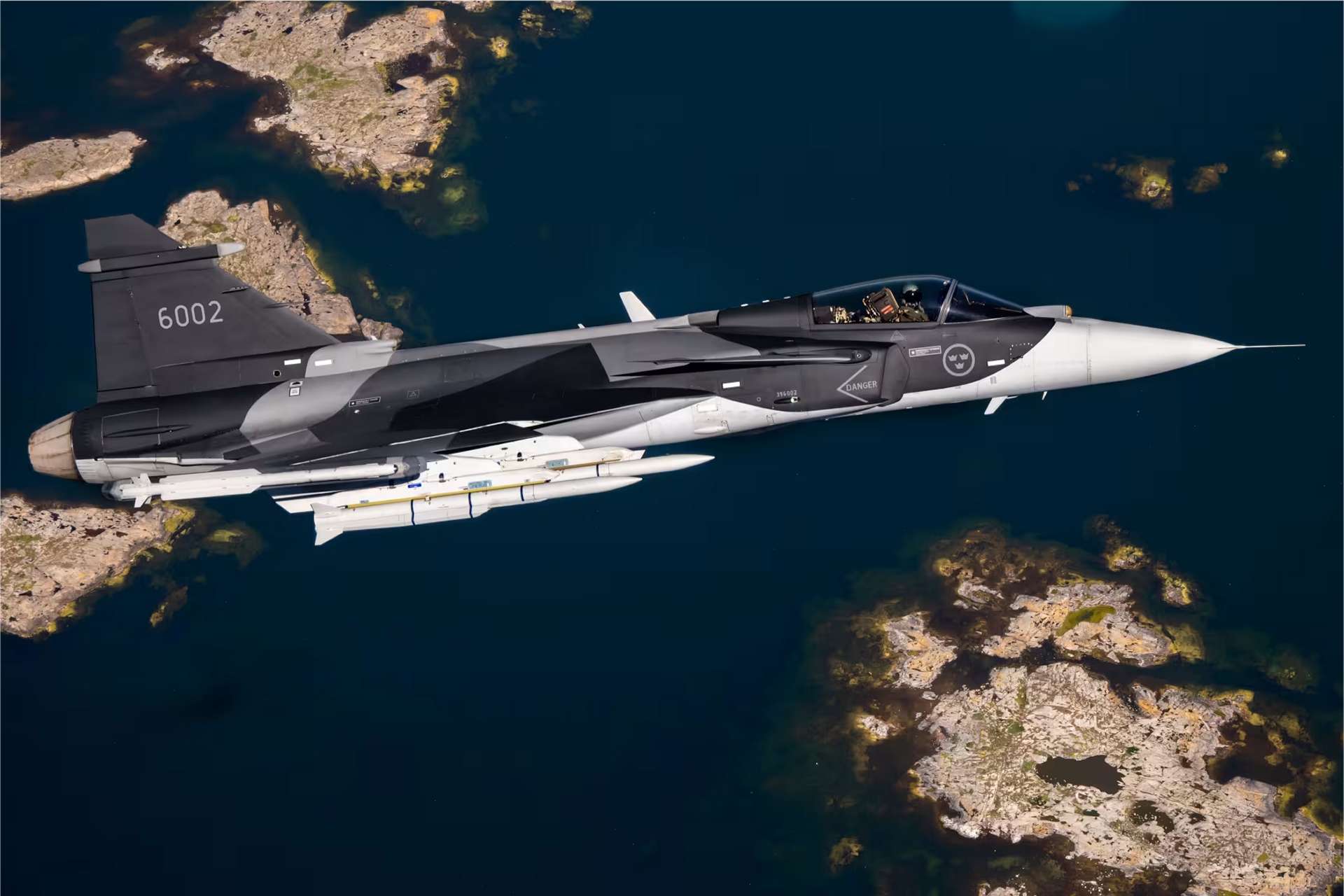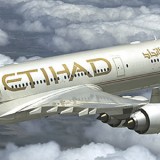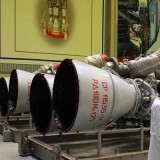India Plans to Launch an International Tender in 2025 for 114 Multi-Role Fighter Aircraft

{loadposition bannertop}
{loadposition sidebarpub}
India is expected to issue a tender this year for acquiring 114 multi-role combat aircraft, according to two sources cited by Reuters. This initiative is part of a modernization effort for the Indian Air Force that dates back nearly two decades. The objective is to bolster a fleet currently reduced to 31 fighter squadrons, mainly composed of Russian or Soviet-origin aircraft, even as neighboring China rapidly expands its air capabilities and Pakistan also benefits from Chinese support. Analysts emphasize that India needs to fill its combat aircraft shortfall as quickly as possible, given that the approved operational requirement stands at 42 squadrons.
Follow Army Recognition on Google News at this link
Illustration image: Gripen E jet fighter armed with IRIS-T and Meteor missiles. (Picture source: SAAB)
Industry observers anticipate that several major manufacturers will compete for this contract, including Lockheed Martin and Boeing from the United States, Russia’s United Aircraft Corporation, France’s Dassault Aviation, Sweden’s Saab, as well as the European Eurofighter consortium. Each is preparing by developing supply chain plans, identifying local partners, and refining their proposals to offer aircraft equipped with cutting-edge technology while remaining cost-competitive.
Although the Indian Air Force does not yet operate American-made fighter jets, some of its aircraft are already equipped with General Electric engines, and other aircraft using these engines are on order. Lockheed Martin’s willingness to offer the F-21, an evolution of the well-known F-16 adapted to India’s specific needs, illustrates foreign industry’s interest in this huge market. U.S. President Donald Trump has even expressed support for a long-term supply of F-35 fighters, but the Indian government has yet to initiate an official process.
Russia, historically India’s main supplier of military equipment, also took advantage of Aero India 2025 to showcase the stealthy Su-57 and discuss the possibility of local production. The two countries had at one time considered a partnership to jointly develop this aircraft, then called the T-50, before terminating that project. With the war in Ukraine slowing down Russian supply chains, India is now seeking to diversify its sources while remaining open to industrial partnerships, provided they guarantee the maintenance and technology transfers necessary over the long term.
Swedish manufacturer Saab also aims to position itself with its Gripen E, presented as a more economical solution in terms of both acquisition and maintenance costs. According to Kent-Åke Molin, who heads the Gripen campaign in India, Indian officials have reportedly shown considerable interest in this proposal, underscoring the strength of Saab’s manufacturing and local partnership plan.
The current project for 114 multi-role aircraft continues an older program launched in 2007, which had planned the purchase of 126 aircraft. That effort was ultimately abandoned in 2015 when the Indian government opted for a direct purchase of 36 Rafales from Dassault Aviation. The French company, already present in India’s fleet, is obviously among the main contenders for this new phase of Air Force modernization. Experts estimate that an official request for proposals could be issued in the coming months, setting off intense competition among the aircraft manufacturers. India is focusing on industrial cooperation and technology transfer to develop its own production capabilities and reduce dependence on imports.

{loadposition bannertop}
{loadposition sidebarpub}
India is expected to issue a tender this year for acquiring 114 multi-role combat aircraft, according to two sources cited by Reuters. This initiative is part of a modernization effort for the Indian Air Force that dates back nearly two decades. The objective is to bolster a fleet currently reduced to 31 fighter squadrons, mainly composed of Russian or Soviet-origin aircraft, even as neighboring China rapidly expands its air capabilities and Pakistan also benefits from Chinese support. Analysts emphasize that India needs to fill its combat aircraft shortfall as quickly as possible, given that the approved operational requirement stands at 42 squadrons.
Illustration image: Gripen E jet fighter armed with IRIS-T and Meteor missiles. (Picture source: SAAB)
Industry observers anticipate that several major manufacturers will compete for this contract, including Lockheed Martin and Boeing from the United States, Russia’s United Aircraft Corporation, France’s Dassault Aviation, Sweden’s Saab, as well as the European Eurofighter consortium. Each is preparing by developing supply chain plans, identifying local partners, and refining their proposals to offer aircraft equipped with cutting-edge technology while remaining cost-competitive.
Although the Indian Air Force does not yet operate American-made fighter jets, some of its aircraft are already equipped with General Electric engines, and other aircraft using these engines are on order. Lockheed Martin’s willingness to offer the F-21, an evolution of the well-known F-16 adapted to India’s specific needs, illustrates foreign industry’s interest in this huge market. U.S. President Donald Trump has even expressed support for a long-term supply of F-35 fighters, but the Indian government has yet to initiate an official process.
Russia, historically India’s main supplier of military equipment, also took advantage of Aero India 2025 to showcase the stealthy Su-57 and discuss the possibility of local production. The two countries had at one time considered a partnership to jointly develop this aircraft, then called the T-50, before terminating that project. With the war in Ukraine slowing down Russian supply chains, India is now seeking to diversify its sources while remaining open to industrial partnerships, provided they guarantee the maintenance and technology transfers necessary over the long term.
Swedish manufacturer Saab also aims to position itself with its Gripen E, presented as a more economical solution in terms of both acquisition and maintenance costs. According to Kent-Åke Molin, who heads the Gripen campaign in India, Indian officials have reportedly shown considerable interest in this proposal, underscoring the strength of Saab’s manufacturing and local partnership plan.
The current project for 114 multi-role aircraft continues an older program launched in 2007, which had planned the purchase of 126 aircraft. That effort was ultimately abandoned in 2015 when the Indian government opted for a direct purchase of 36 Rafales from Dassault Aviation. The French company, already present in India’s fleet, is obviously among the main contenders for this new phase of Air Force modernization. Experts estimate that an official request for proposals could be issued in the coming months, setting off intense competition among the aircraft manufacturers. India is focusing on industrial cooperation and technology transfer to develop its own production capabilities and reduce dependence on imports.





